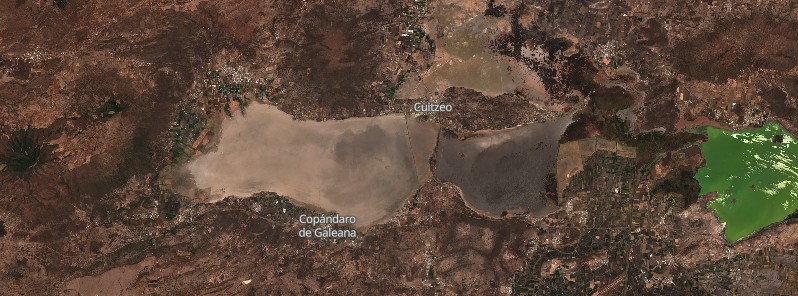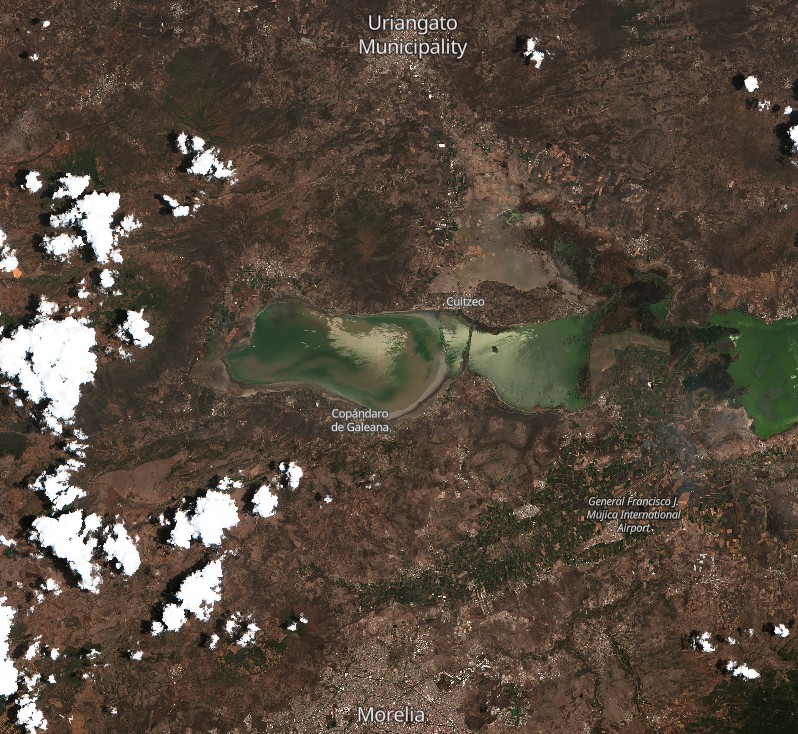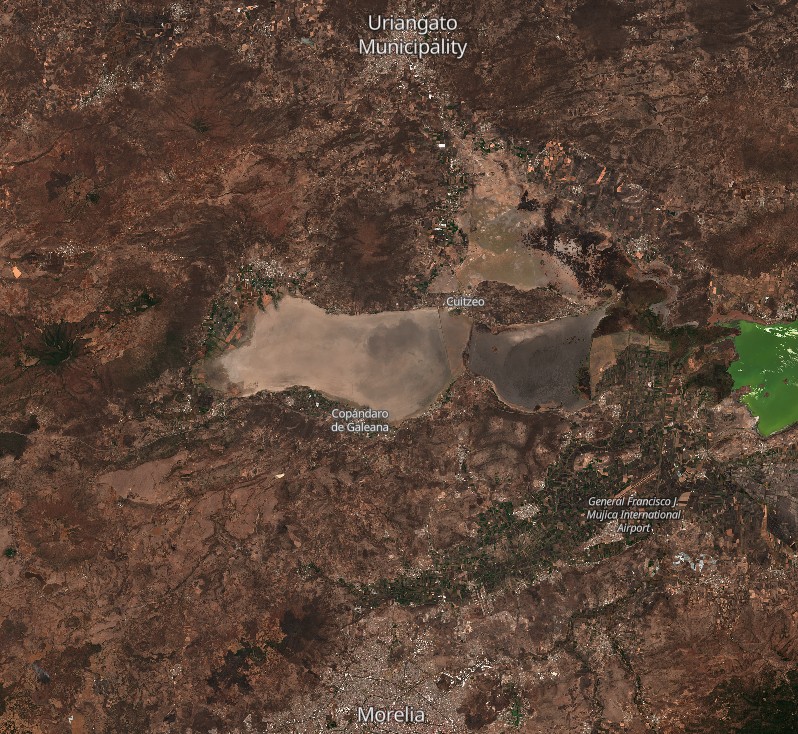Lake Cuitzeo, the second-largest lake in Mexico dries up

At the end of April 2021, drought conditions were covering 85 percent of Mexico. Numerous lakes and reservoirs have dried up, or are in the process of drying up, including the country's second-largest body of freshwater — Lake Cuitzeo.
Before the current drought, Lake Cuitzeo was Mexico's second-biggest lake, with an area of approximately 300 – 400 km2 (120 – 150 mi2), and the site of a thriving fishing economy in Michoacán.
Now, this is a cemetery of abandoned fishing boats and a shortcut for motorists which creates frequent and prolonged dust clouds that reach municipalities 20 km (12.4 miles) away in Guanajuato.
That affects the health of residents in nearby communities, causing allergies, respiratory illnesses, and gastrointestinal complications from the bacteria they transport, according to the State Health Ministry.
The images below show Lake Cuitzeo on May 4, 2020, and May 4, 2021. The difference is staggering.

Lake Cuitzeo on May 4, 2020. Credit: Copernicus EU/Sentinel-2, TW

Lake Cuitzeo on May 4, 2021. Credit: Copernicus EU/Sentinel-2, TW
The animation shows drying out of Lake Cuitzeo in Michoacan from April 2021 to May 2021
According to Julieta Gallardo Mora, honorary president of a foundation committed to conserving the lake, its deterioration started in 1941, and authorities have made no effort to stop it.
"The first blow was when the Cointzio dam was built in 1941, which meant that two-thirds of Lake Cuitzeo was removed," she said.
The first noticeable impact was the disappearance of fish, starting with the choristoma, which is native to the lakes of Jalisco and Michoacán, followed by whitefish and other water life.
Featured image credit: Copernicus EU/Sentinel-2, TW

No mention of the average depth? If it can evaporate that fast and is flat enough for motor car traffic, I’d say its mighty shallow to begin with.